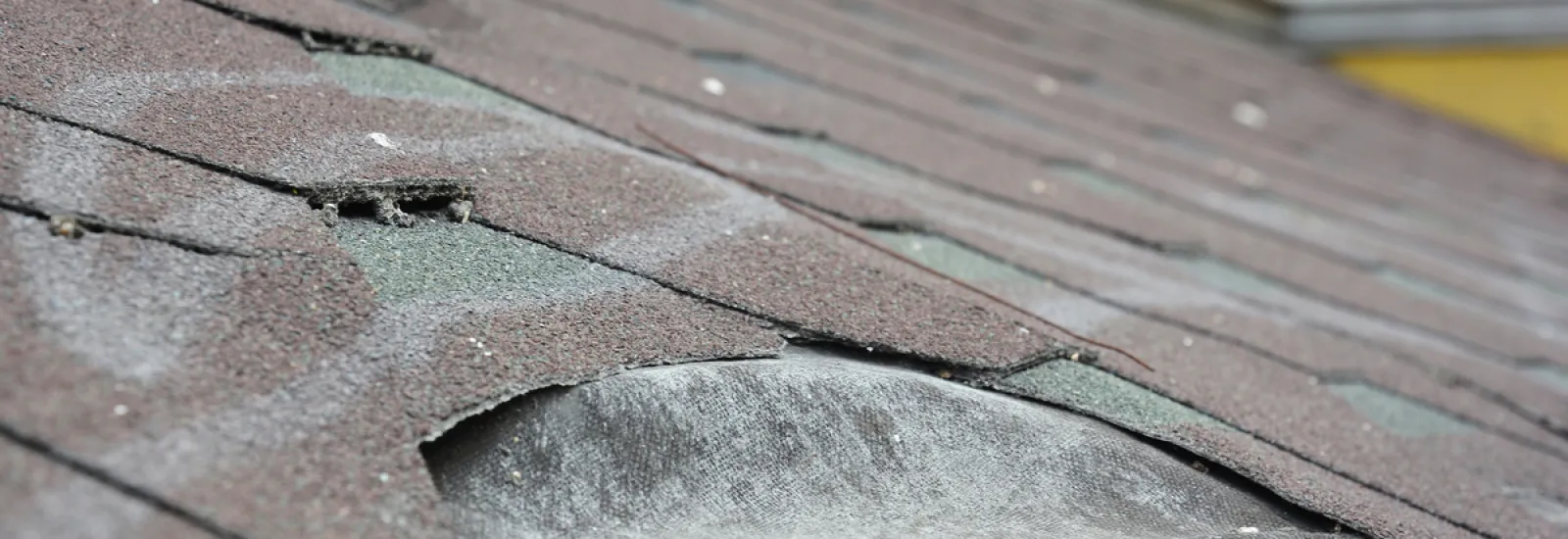From your heating and cooling to your home's structural integrity, the
health of your home depends on a functional roof. A well-built roof is designed
to last for years, if not decades before needing to be replaced. But over the
life of a roof, a number of issues can crop up and jeopardize not only the
performance of your roof, but your entire home.
There's good
news, though: with every roofing problem, there's also a solution. To help you
manage your roof, minimize repairs and extend its life, we've identified some
of the top (roofing problems and solutions) every homeowner needs to know.
Common Roof Problems
If you live in a
home long enough, it's possible your roof will develop one of the following
issues:
- Bad chimney flashing. The flashing that protects a chimney's
meeting with your roofing materials is installed to protect your home from
water leaks in that seam. But the water and weather that can damage this joint
can also deteriorate your flashing over time, leading to cracks, warping, and partial
detachment from the chimney and/or roof.
- Thermal cracking in shingles. Heat, sun and harsh summer elements can
cause cracking in shingles over time. This is more
likely in shingles that are closer to the end of their lifespan, and it can
expose your home to water damage, reduced insulation, and other problems.
- Leaking soffits. Your home's soffits typically experience
more exposure to the elements, and they may experience increased water exposure
in places where gutters are attached to the soffits. This can make them a prime
source of leaking that sends water into your home's interior.
- Leaks into your attic or other interior
space. Water leaks are
one of the most common problems your roof may develop, and these leaks can stem
from a number of different roofing problems. While you may see water damage in your home's
interior, it's also possible for water leaks to be hidden in
unfinished structures, or even inside the walls of your home.
- Blocked vents. Leaves and other debris can block
ventilation in your roof, creating airflow issues that increase the risk of
mold and other problems in your attic.
- Missing shingles or tiles. Severe wind and other weather elements
can cause shingles and tiles to be taken off of your home. This is often
visible from ground level, and requires immediate repair to keep your home
protected against the elements.
Causes of Roof Defects
Every roof
problem can be traced back to at least one cause. In some cases, multiple
factors may contribute to the development of these problems. Common causes of
roof defects include:
- Prolonged exposure to rain, sun and other
elements. Severe weather,
which can include high winds, rain and snow, will gradually deteriorate the
quality of your roof. While roof weathering is often a gradual process of
wear-and-tear, it's also possible that bad weather can quickly cause damage,
requiring immediate repairs.
- Water damage. Water damage can be permanent in your
roof if standing water develops on the roof. Accumulated debris, such as leaves
and branches, is a common cause for water-related damage, although severe
weather such as hurricanes can also result in water damage.
- Improper installation. If you recently paid for a roof repair
or replacement and have noticed the same problems persisting—or, even worse,
have identified new problems such as water leaks in your home—it's likely due
to poor installation by your last contractor.
- Damage from hail or falling tree limbs. Falling objects and blunt trauma to the
roof can damage the outer structure and even the inner frame of a roof. Even on
a relatively new roof, this can lead to immediate defects, starting with water
entering your home.
- Natural deterioration. Even in the best conditions, most
roofing materials aren't designed to last forever. Asphalt roofs are designed to last 15 to 30 years,
while clay tile roofs can last for 50 years or longer. The materials you choose
for your roof will determine how long you can go before replacing the roof.
How to Spot Roof Problems
The ability to
identify roof problems early can save you a lot of money in repair costs to
your roof and the rest of your home. Here are some signs and steps you should
consider when determining whether your roof may be damaged and in need of
repair.
- Interior water damage. Water stains on your ceilings, walls, or
other indoor fixtures are a clear sign of water damage.
- Visible debris on your roof. Debris on your roof doesn't always
indicate damage, but it's smart to clear away the debris to minimize potential
damage and to check for any damage that might have already occurred.
- Going up to the roof to inspect the roof
up-close. In some cases,
damage to the roof can be difficult to identify until it's already caused
damage to your home. If you suspect severe wind or hail has damaged your home,
for example, you may need to closely examine your roof's materials to check for
signs of denting, cracking, or other visible damage. If you're reluctant to
climb onto your own roof, a local roof specialist can provide a professional
inspection and determine whether any repair work is needed.
Whether you need common roof repairs or a full replacement of your roof's materials, it's
highly recommended that you have all repair and replacement work performed by
licensed and experienced roofing specialists. A local roofing expert can help
you assess damage, choose the right roofing materials
for your home, and professionally install a roof that will keep your home
well-protected for years to come.
